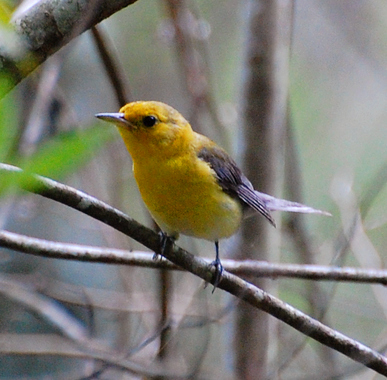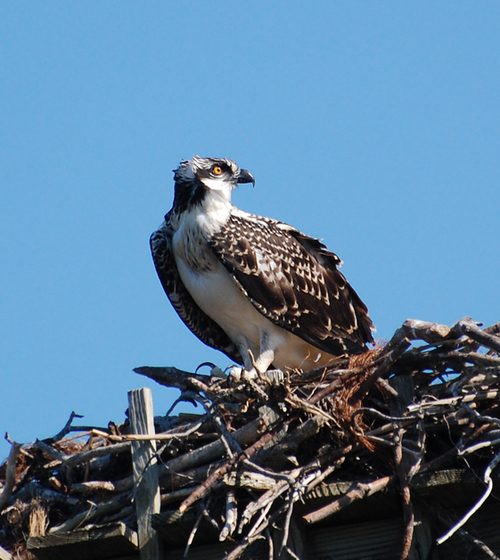
Willets
July 14th, 2010
Outer Banks has a variety of sandpipers in migration and winter--32 of them on the official checklist--but as far as breeders, it has just one: the Willet. It's a medium-ish sandpiper, about the size of a grackle on stilts. I've been familiar with them since I was a girl, though I didn't know them by name until I became a birder. We often see them on evening walks down the beach. They stride back and forth at the edge of the surf, looking for tidbits.

1680x1050 wallpaper

Willets also forage in the shallows of the sound, where they can be hard to distinguish from other medium-sized sandpipers. (And yes, even in July, there are other sandpipers: for this class of birds, fall migration begins very early.) As soon as one takes flight, though, there's no doubt. The striking black-and-white banded wings are unique to this species.


Herons and Ibises
July 13th, 2010
In past summers, I've seen numerous herons and ibises wading close to shore from the Pea Island trail. This year, due to lack of rainfall, that area was dried up and unappealing to them and most of them waded far away from me and my camera. Thus, most of my heron photos were of birds in flight.
These are all common species in the salt marshes of Cape Hatteras. You can scarcely visit Pea Island in summer without spotting some of each of them.

Great Egret
A characteristic bird of Hatteras--big, numerous, and not particularly timid. They can even be seen wading in wet ditches along roadsides.
( More )
Eastern Towhee
July 12th, 2010
The towhee is the most abundant breeding sparrow of the Outer Banks. At Pea Island you can find them on any summer morning, singing in the bushes beside the boardwalk. Individual towhee songs vary, but they all have a characteristic rhythm that some describe as, "drink-your-tea-tea-tea!"


Laughing Gull
July 11th, 2010

1680x1050 wallpaper
Lifer songbirds in the south
July 10th, 2010
Four new songbirds for me on this trip--a bit of a surprise for a vacation that was centered around the ocean!
1. Seaside Sparrow

This rather drab little bird is a permanent resident in the salt marshes of Outer Banks. Usually a secretive species, one hopped onto a nearby perch and sang (a buzzy, insectile song reminiscent of a Grasshopper Sparrow) while I was photographing the skimmers. I had time for one shot. Poor-quality though it is, the picture plus that song is sufficient to identify him confidently.
2. Prairie Warbler
I found one of these handsome southern warblers when I was hiking Swift Creek Trail in Virginia. It's misnamed--it's a bird of scrubby fields and forest undergrowth, not prairie. Alas, when I went back later with camera in hand, came to what I thought was his territory and pished like crazy, he did not make a second appearance.
Instead, a White-Eyed Vireo answered my pishes by fluttering down into the understory and perching right in front of me. So I photographed him instead :-)

3. Brown-Headed Nuthatch
A bird of southern pine forests. I saw my first on Roanoke Island, where they're abundant (specifically, saw a band of them just outside the Aquarium parking lot). This is Outer Banks' only nuthatch in summer, so the ID was pretty easy. No photo for this one.
4. Prothonotary Warbler
Best for last.

This is one of the most striking warblers there is, and the picture does not do it justice. (For that, click on the above link.) The breeding male is deep golden with a tinge of orange--"marigold yellow", Michael called it. It's also an unusual warbler, being one of only two species who nest in tree cavities: leftover woodpecker holes and the like.
Prothonotary Warblers breed in wooded swamps, primarily in the southeast. I found my lifer, and three more besides, at Alligator River Wildlife Refuge (on the mainland), whose cypress swamps are ideal habitat for them.
One Of A Kind
July 9th, 2010
It's always exciting to see a new species. But even more exciting is to see a bird that's literally one of a kind--like this partial albino Red-Winged Blackbird!

He lives at Pea Island Wildlife Refuge, making his territory, along with other redwings, in the tangle of bushes on either side of the boardwalk. He's famous, in fact. There are photos of him in the visitor center. Leucistic birds usually look motley, but I find this one quite striking.
Osprey
July 8th, 2010
The Osprey is a large fish-eating raptor found throughout the world, on every continent save Antarctica. They breed both inland and on the coast. When my family first started going to Outer Banks--late 70's, early 80's--I never saw a single osprey. I now know that that was probably due to DDT poisoning. Being apex predators, osprey developed a concentrated buildup of DDT in their bodies. The chemical caused their eggs to be fragile and crack easily.
DDT has since been banned and their numbers have recovered. Now, crossing over from the mainland to Nagshead in summer, you can see multiple active osprey nests right beside the bridge!
When we went dolphin-watching, the dock where we departed from had an osprey nest close enough to photograph. One adult stayed in the nest while another flew back and forth, bringing food to the young. In the second photo, you can just see the fuzzy little head of a nestling peeking up.



The Stars of the Show
July 7th, 2010
Of all the avifauna of Outer Banks, none capture my heart like the Black Skimmers. Ternlike birds with striking, huge black and red bills, they fly low, dragging their oversized lower mandibles in the water. They're 16-20 inches perched, but in flight, they look a lot bigger than that, with a wingspan of up to four feet. The first time I saw one I couldn't believe my eyes.
On Sunday afternoon, three of them gave me an extended show at Pea Island salt marsh. They flew quite close to me as they circled around skimming the water, allowing me to snap dozens of pictures.

1680x1050 wallpaper
You can see this bird's strangest feature above--the lower mandible is about a third longer than the upper.

1680x1050 wallpaper
This is the classic skimmer posture. The lower mandible skims in shallow water feeling for fish and crustaceans. They'll fly along some distance like that, leaving a little wake behind them. I see them most often on salt marshes and sounds, but they also skim the ocean surf. (A few years ago a pair of them did that right outside our cottage!)

When they find food, they double their bills back to catch it.


The one behind appears to be a juvenile: note the white collar and other imperfections of his plumage.
I'm back
July 6th, 2010

I return from vacation with ten zillion photos. And twice as many bug bites.
Oy vey, the ticks. Oy vey, the chiggers. What a relief to be back in a place where the bugs only bite you once then fly away. Instead of freaking colonizing you!
That aside, I had an awesome time at Outer Banks. The cottage was spacious and beautiful and comfy and oceanfront. The body boarding was great. The birding was out of this world. Between Virginia and Carolina I racked up six lifers. Bird photography in Virginia was of limited success, but at Outer Banks, all sorts of sea birds and a few song birds posed nicely for me.
Details to come. For now, my bed is calling.
Life Bird!
June 23rd, 2010
"I'm going hiking!" I announced.
"You're nuts," said my mom.
"You need your head checked," said my dad.
"Cuckoo!" said my husband.
"100F," said the thermometer.
Pshaw, I say. It's not so bad. You move slow, you drink lots. The body adapts. I grew up with this weather (generally in July and August, mind you, not June). It remembers.
Today I went exploring Swift Creek Trail, a forest road near where my parents live. If I followed it far enough I'd get to Swift Creek, where my brother went fishing and camping as a teenager. (There was a big puddle that used to form on the dirt road behind our house; it drained via a narrow channel into the woods and eventually into Swift Creek. My brother and I used to dam up the channel so the puddle got huge and then we'd play in it. And then we'd get in trouble because some guy lived back there and actually had to drive on that road. Ah, memories.) But today was not the day for a two-mile hike.
So I just went a ways down the gravel road, seeing what I could see. It made my day, my week, and heck, my entire month when I found a singing Prairie Warbler, a striking yellow-breasted bird with black flank streaks and "mustache", and my 220-somethingth lifer! I found him exactly the way I love to find new birds: unannounced and unexpected. This is one of the southeastern warblers that almost never occurs in Ottawa.
The other point of interest was a Summer Tanager, the cherry red bird that's a close cousin to our Scarlet Tanager. (Speaking of Scarlet Tanagers, we saw one of those at Shenandoah, along with two other "mountain specialties", Common Ravens and Slate-Colored Juncos. Those three northern birds breed nowhere else in Virginia but the mountains.)
My body handled it fine. I didn't even get a dehydration headache like I got after the last hike, where I didn't drink quite enough. There is, however, a small problem with ticks. The underbrush is teeming with them this summer: the little bitty ones that, IIRC, are the ones that transmit Lyme Disease. I've picked (or had picked) three off me so far.
The rest of the week will be eventful. Dutch Gap tomorrow, Busch Gardens on Friday, then off to Cape Hatteras for a week on Saturday.
|
